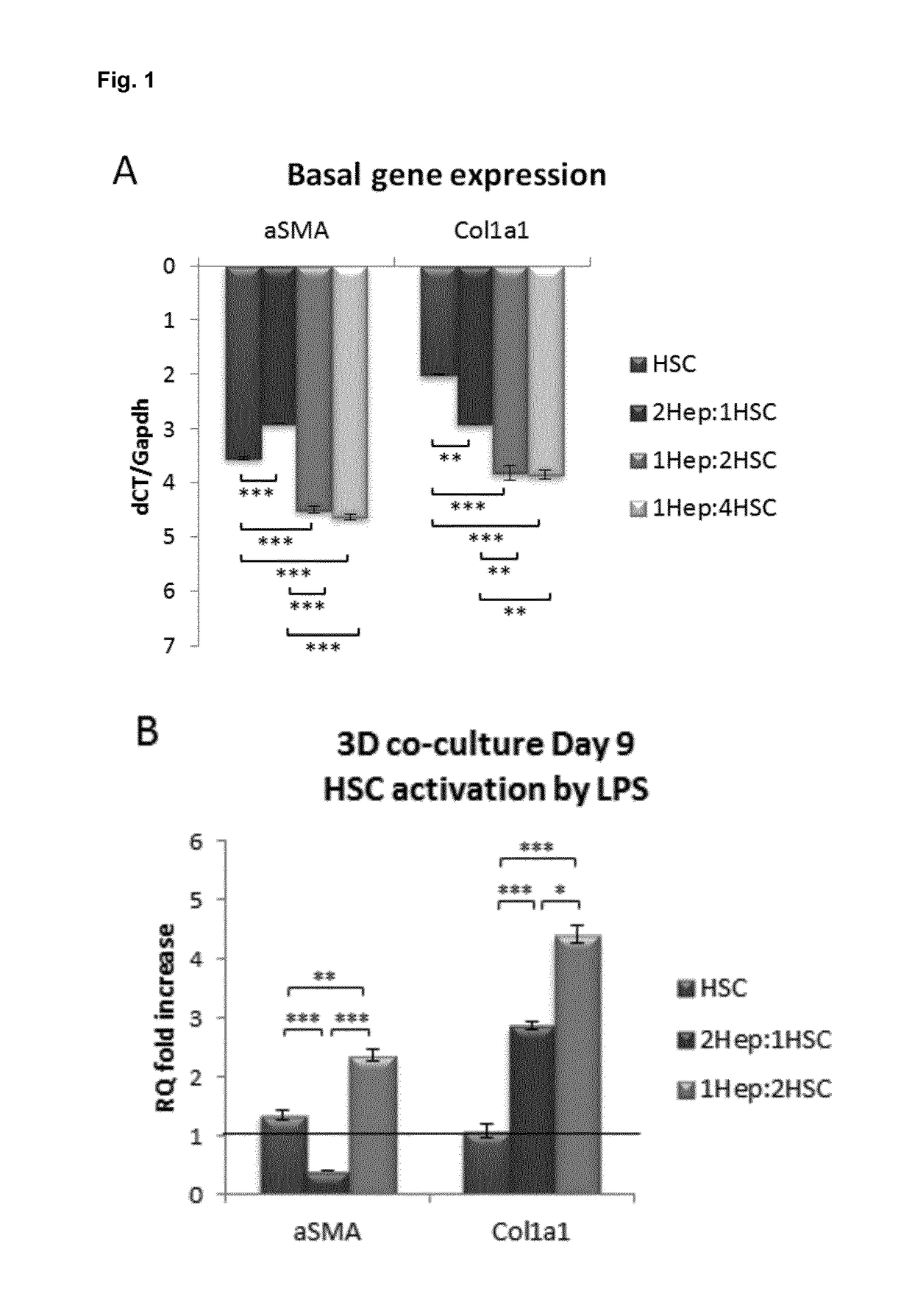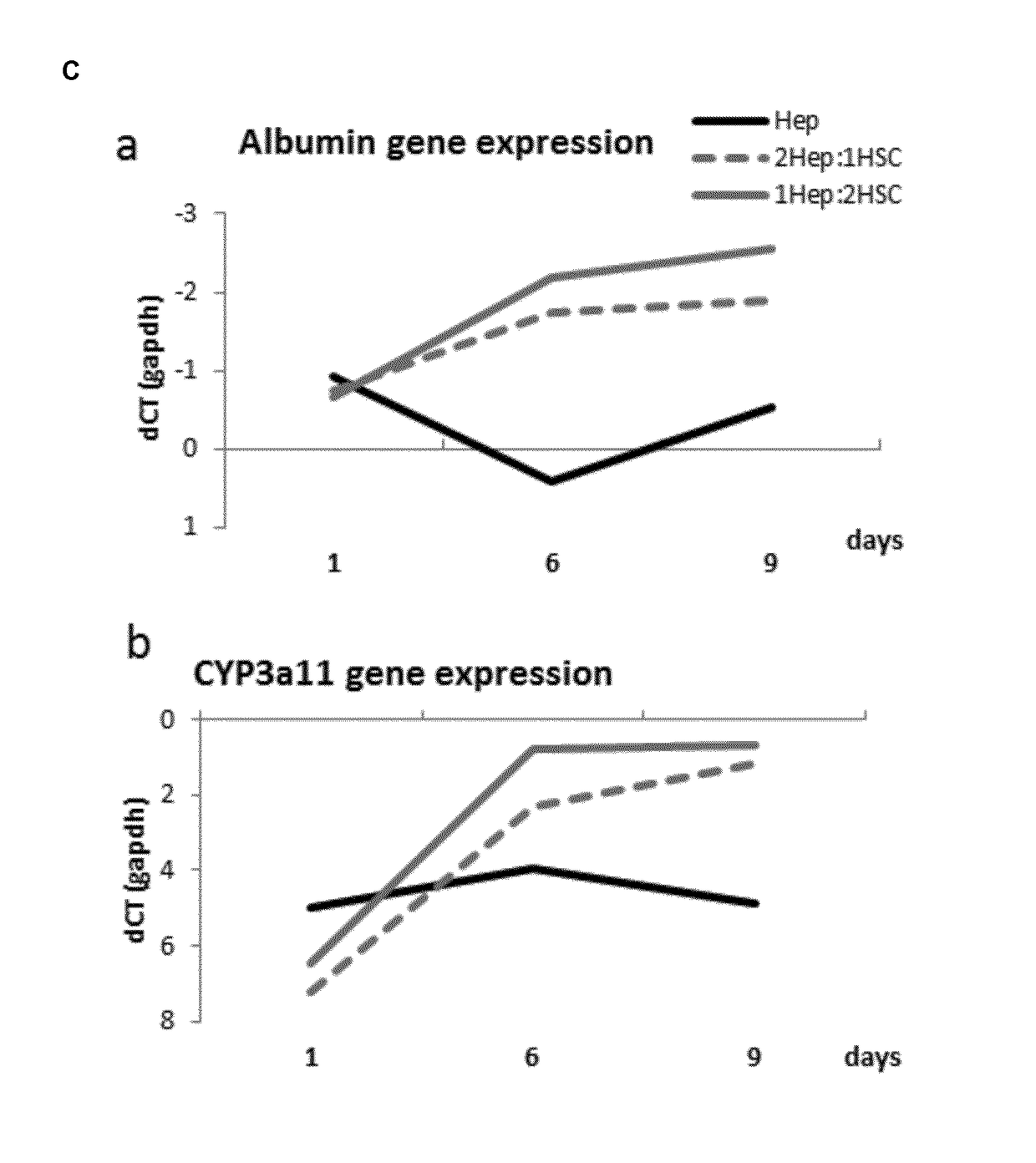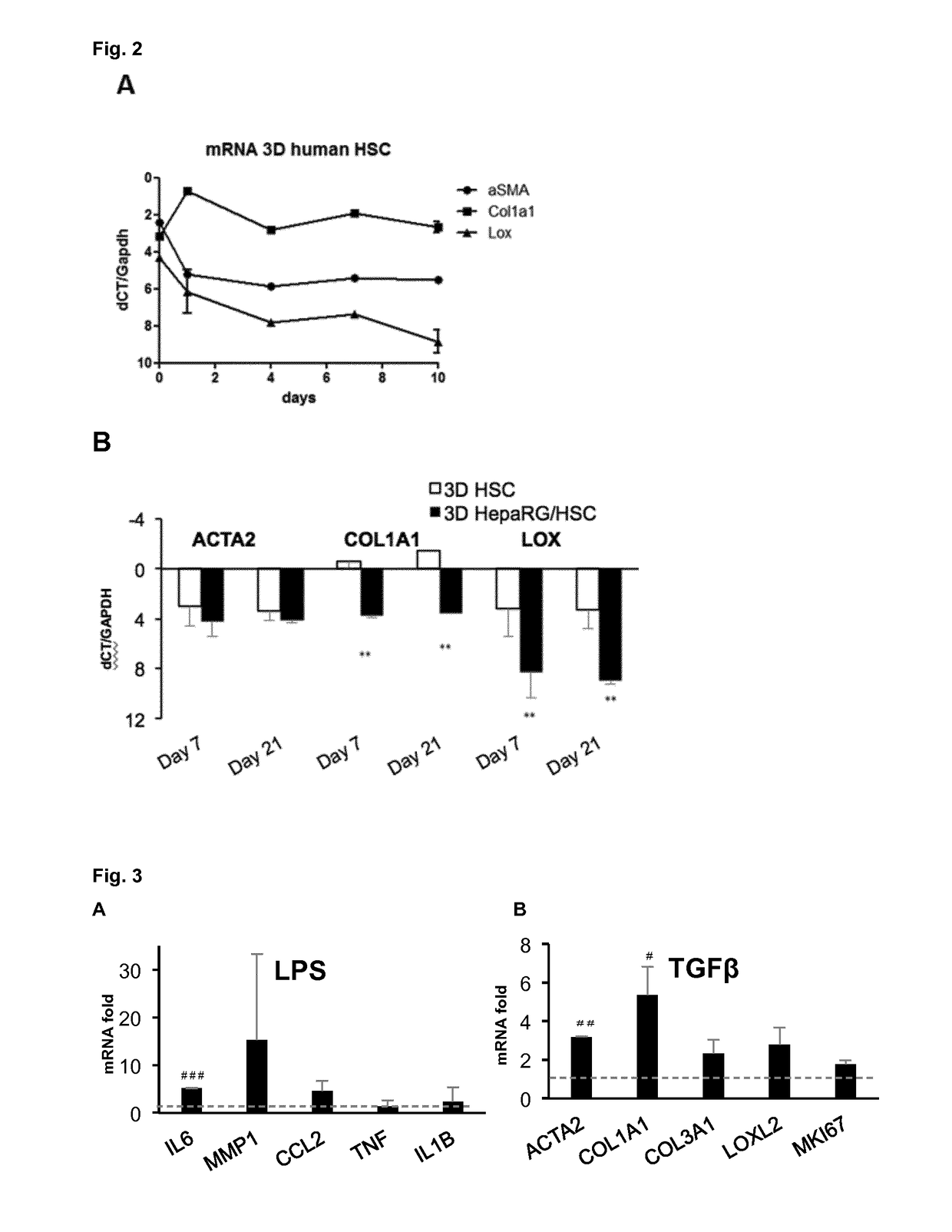Human hepatic 3D co-culture model and uses thereof
a hepatic 3d co-culture and human technology, applied in the field of human hepatic 3d co-culture models, can solve the problems of inability to control the activation process of hscs for the testing of compounds, no pharmacological agent has been approved for routine use in clinical context, and no pharmacological agent has been approved in clinical context. achieve the effect of increasing col1a1, col3a1 and/or loxl2 expression
- Summary
- Abstract
- Description
- Claims
- Application Information
AI Technical Summary
Benefits of technology
Problems solved by technology
Method used
Image
Examples
example 1
Selection of 3D Co-Culture Ratios
Material and Methods
Liver Cell Isolations and Seeding
[0052]Male balbC mice were used for all experiments; animals were housed in a controlled environment with free access to chow and water. Cells were isolated from mice aged 20-25 weeks after anesthesia with Nembutal. Previously described procedures for hepatic stellate cells (HSC) (Guimaraes et al., 2010; J. Hepatol 52(3): 389-397) and hepatocytes (Hep) (Goncalves et al., 2007 Malar J 6:169) were followed. Cells were maintained in hepatocyte culture medium consisting of William' E medium (1×) with 2 mM of Gln, 20 mU / ml insulin, 50 nM dexamethasone, 2.5 μg / ml fungizone, 50 μg / ml gentamycin, 100 μg / ml vancomycin, 100 U / ml penicillin, 100 μg / ml streptamycin, 7 ng / ml glucagon and 10% FBS. After isolation, the different cell types were put together at different ratios (2Hep:1HSC; 1Hep:2HSC; 1Hep:4HSC) and seeded at 10 pl / well with a final amount of 5000 cells / well. Cells were kept in a low attachment pla...
example 2
Characterization and Proof Testing of the 3D HepaRG / HSC Co-Culture
HSC Cells
[0059]Human cells Hepatic Stellate Cells (HSC) were isolated from hepatic non-parenchymal fraction and prepared for culture as described in Thoen et al., 2011 (J Hepatol 55(6): 1353-1360).
HepaRG
[0060]Cells were obtained from Biopredic, 8M differentiated cells / vial and thawed at the day 0 (starting of the co-culture). Thawing was performed following the instructions of the providers.
Medium
[0061]Cells were maintained in HepaRG maintenance medium without DMSO. All compound incubations (CYP inducers and APAP) were performed in Induction / Toxicity medium which is the same medium but without serum.
[0062]Generation and maintenance of 3D cell spheroids For the generation of the cell spheroids, 96-well plates treated with cell-repellent (Greiner ref. 650970) are used. HepaRG cells are directly used upon thawing and HSCs were trypsinized and collected in HepaRG thawing medium. Mono- and co-culture suspensions were prepa...
example 3
In Vivo Confirmation of the Pro-Fibrotic Profile of the APAP
Material and Methods
Liver In Vivo Animal Models
[0088]Male balbC and C57BL / 6 mice were used for all experiments; animals were housed in a controlled environment with free access to chow and water. The experimental protocol was approved by the institutional Animal Care and Use Committee of Vrije Universiteit Brussel, permit number 14-212-2, and National Institutes of Health principles of laboratory animal care (NIH publication 86-23, revised 1995) were followed.
[0089]Acute and chronic models for liver fibrosis were used on mice of age 7-8 weeks. Acute injury was induced by a single dose of Acetaminophen (APAP) of 50; 150; 300 or 500 mg APAP / kg weight. Chronic injury was induced by repeated injections of APAP twice per week for 4 weeks. Hepatic stellate cells were collected at the end of the treatment. Isolation of stellate cells was done using FACS, based on UV-positivity. After isolation cells were not cultured, but immediat...
PUM
| Property | Measurement | Unit |
|---|---|---|
| weight | aaaaa | aaaaa |
| concentration | aaaaa | aaaaa |
| diameter | aaaaa | aaaaa |
Abstract
Description
Claims
Application Information
 Login to View More
Login to View More - R&D
- Intellectual Property
- Life Sciences
- Materials
- Tech Scout
- Unparalleled Data Quality
- Higher Quality Content
- 60% Fewer Hallucinations
Browse by: Latest US Patents, China's latest patents, Technical Efficacy Thesaurus, Application Domain, Technology Topic, Popular Technical Reports.
© 2025 PatSnap. All rights reserved.Legal|Privacy policy|Modern Slavery Act Transparency Statement|Sitemap|About US| Contact US: help@patsnap.com



